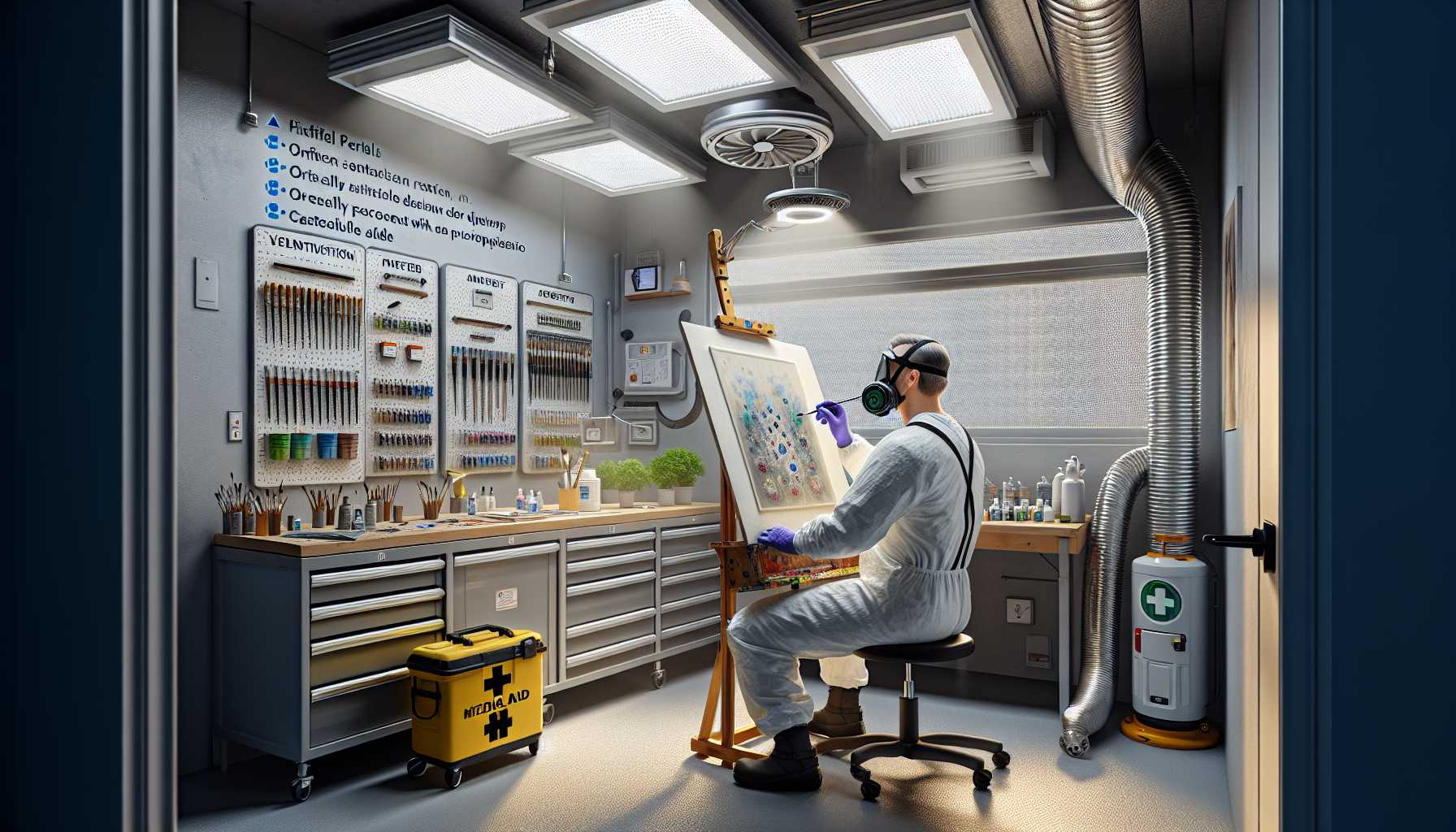Hello to all our amazing artists out there! Today, we’re talking about a crucial topic that frequently gets sidelined – maintaining our safety while crafting magnificent art pieces. These safety tips come from years of hands-on experience, and I am eager to pass on this knowledge to you.
The Significance of Adequate Ventilation
Ever noticed the unique scent of newly-applied paint? Although it may seem familiar, it’s not always harmless. Paint fumes can emit volatile organic compounds (VOCs), that can negatively affect our health. I myself once suffered from headaches induced by prolonged exposure in a poorly ventilated room.
Establishing Your Ventilation System
These measures have effectively improved conditions in my own studio:
– Set up an exhaust fan close to your work station
– Always keep windows ajar when possible
– Opt for air purifiers furnished with activated carbon filters
– Strategically position fans to encourage cross-ventilation
– If painting regularly, consider investing in a professional ventilation system
Crucial Personal Protective Equipment
Believe me when I say, your future self will be grateful for investing in the following:
– High-quality respirator mask (specifically approved for paint fumes)
– Chemical-resistant hand gloves
– Eye-protection gear
– Old clothing or apron
– Closed footwear
Building a Safe Workspace
I have designed my studio with safety as the priority:
– Separate painting space distanced from dining areas
– Surfaces that wipe down easily
– Appropriate storage spaces for materials
– Ensured clear passages for better air circulation
– Emergency equipment within easy reach
Strategic Storage Measures
Ensure the safety of your materials by:
– Keeping paints in their original packaging
– Using containers that are airtight for storing solvents
– Always place materials away from heat sources
– Label everything for clarity and easy identification
– Dispose of any waste in the correct manner
Be Prepared for Emergencies
Always remember to keep the following items accessible:
– First aid kit
– An eye rinsing station
– Easy-to-reach emergency contact numbers
– Material Safety Data Sheets (MSDS)
– Fire extinguisher
Daily Safety Rituals
Incorporating these simple habits can make an enormous difference:
– Reg
